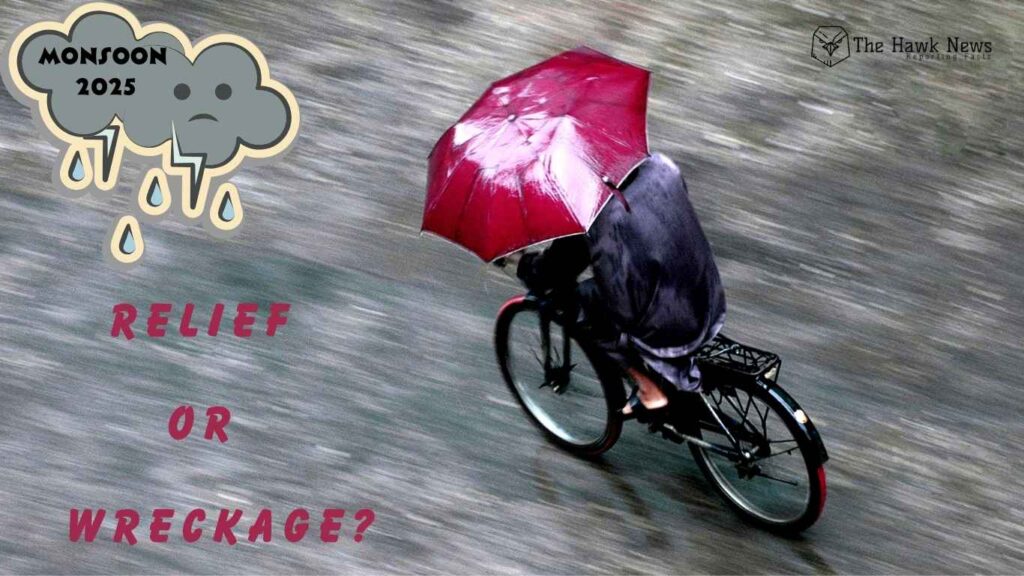
India Braces for an Uncertain Monsoon Season Amid Climate Shifts and Global Warming
☔ Introduction: A Nation Looks to the Skies
India’s monsoon season is more than a weather pattern—it’s a lifeline. With 70% of the annual rainfall occurring between June and September, the monsoon directly affects agriculture, water availability, and the overall economy. As Monsoon 2025 approaches, a pivotal question looms: will it bring the much-needed relief or unleash widespread damage?
This year, meteorological data, climate models, and environmental indicators present a mixed forecast. While some regions are expected to receive normal to above-normal rainfall, others may face flooding or droughts. The unpredictable nature of the monsoon has intensified due to climate change, making accurate forecasting both more critical and more complex.
⛅ Forecast Overview: IMD Predictions for 2025
The India Meteorological Department (IMD) has released its preliminary long-range forecast for Monsoon 2025:
- Rainfall Levels: Most parts of the country are expected to receive “normal” rainfall (96%-104% of the Long Period Average).
- Regional Variations: The southern and northeastern states are likely to see above-average rain, while northwestern and central regions might experience deficient or erratic monsoon spells.
- Onset Date: The monsoon is expected to arrive in Kerala around June 4, slightly later than the usual June 1 onset.
- Temperature Trends: Higher pre-monsoon temperatures and prolonged heatwaves in northern India may affect initial rainfall penetration and absorption.
⛈ Climate Change: A Rising Threat to Predictability
The reliability of monsoon patterns has been steadily decreasing due to global warming and anthropogenic climate disruptions. In 2024, India witnessed both intense flooding and prolonged dry spells across different states—a pattern that may repeat this year.
Key climate impacts influencing Monsoon 2025 include:
- El Niño & La Niña Oscillations: The weakening El Niño and a transition to a neutral phase could stabilize rainfall in parts of the Indian subcontinent.
- Indian Ocean Dipole (IOD): A positive IOD may enhance rainfall over eastern and southern India.
- Urbanization & Deforestation: Rapid changes in land use have altered microclimates, exacerbating both urban flooding and rural droughts.
🌾 Agriculture at Stake: The Farmer’s Dilemma
India’s agrarian economy depends heavily on predictable monsoon patterns. Inconsistent rainfall affects sowing cycles, crop yields, and rural income levels.
Challenges for 2025:
- Late Onset: A delayed start could hinder early sowing of pulses and oilseeds.
- Intense Rainfall: Short bursts of torrential rain may damage standing crops.
- Waterlogging vs. Water Scarcity: The dual threat of drought in some areas and floods in others will require agile policy interventions and better irrigation infrastructure.
Government Response:
- The Ministry of Agriculture has advised states to prepare contingency plans.
- Crop insurance schemes are being promoted for small and marginal farmers.
- Expansion of weather-based advisory services is underway.
🌊 Urban Woes: Can Cities Withstand the Rains?
Urban India is increasingly vulnerable to monsoon-related disruptions. From Mumbai to Bengaluru, overflowing drains, waterlogged roads, and landslides are perennial issues.
Major Concerns:
- Inadequate Drainage: Cities with outdated sewage systems are at higher risk.
- Encroached Water Bodies: Vanishing lakes and wetlands exacerbate flooding.
- Health Hazards: Rise in vector-borne diseases like dengue and malaria is expected.
City Preparedness:
- Municipal bodies have been directed to complete desilting operations by end-May.
- Smart city initiatives are incorporating flood-mapping and drainage monitoring systems.
📊 Economic Ripple Effects: Monsoon and the Markets
A poor monsoon doesn’t just affect agriculture. It influences inflation, fuel consumption, energy demand, and consumer spending.
Possible Outcomes:
- Food Inflation: Shortfalls in production could raise prices of essential commodities.
- Power Shortages: Lower hydroelectric output may lead to increased coal use.
- Reduced Rural Spending: Lower agricultural income impacts FMCG and auto sales in rural markets.
The Reserve Bank of India (RBI) has already noted monsoon variability as a risk factor for the country’s 2025 economic outlook.
🌧️ Weather Technology & Early Warning Systems
India is stepping up efforts to enhance climate resilience:
- Weather Satellites: ISRO’s advanced satellites are improving rainfall prediction accuracy.
- Mobile Alerts: The IMD is expanding SMS-based weather alerts for rural populations.
- AI Forecasting Models: New tools integrating big data and machine learning are being trialed to improve 5-7 day forecasts.
⚡ Conclusion: Preparedness is Key
Whether Monsoon 2025 brings healing rains or destructive downpours, one thing is certain: preparation will make all the difference. Policymakers, farmers, urban planners, and everyday citizens must act now to adapt and build resilience.
The hope is for balance—enough rain to fill reservoirs and nourish crops, but not so much as to cause chaos. As the first clouds roll in, India waits with a mix of anxiety and hope.